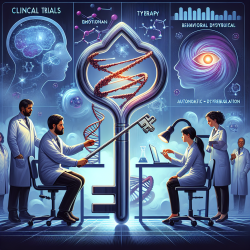Introduction
In the ever-evolving landscape of healthcare, the integration of interprofessional teams has become a cornerstone for effective patient management. The research article "Intrathecal Pain Management: A Team-Based Approach" by Adler and Lotz (2017) provides a comprehensive overview of how an interprofessional approach can enhance the management of chronic pain through intrathecal (IT) therapy. This blog aims to distill the key findings from the research and encourage practitioners to either implement these outcomes or delve deeper into further research to improve their practice.
Understanding the Team-Based Approach
The study emphasizes the importance of a collaborative approach involving physician assistants (PAs), nurse practitioners (NPs), and registered nurses (RNs) in managing chronic pain through IT therapy. Each of these roles contributes uniquely to patient education, post-implant maintenance, and ongoing supportive care. The article highlights that treatment success hinges on continuous monitoring of efficacy and adverse effects, with necessary adjustments to medication selection and dosing.
Key Outcomes and Implementation Strategies
Here are some critical outcomes from the research that practitioners can implement:
- Patient Selection: The study underscores the significance of selecting the right candidates for IT therapy. This involves evaluating the patient's treatment history, psychological well-being, and social support systems.
- Medication Management: Currently, morphine and ziconotide are the only FDA-approved agents for IT analgesia. The research provides detailed information on dosing, titration, and managing adverse effects, which is crucial for PAs, NPs, and RNs involved in IT therapy.
- Outcome Monitoring: Continuous assessment of treatment outcomes is vital. Practitioners should employ standardized pain assessment tools to ensure accurate monitoring and timely adjustments to therapy.
- Interprofessional Communication: Effective communication among healthcare professionals is essential for the optimal management of patients receiving IT therapy. This involves regular updates and discussions about patient progress and treatment adjustments.
Encouraging Further Research
While the study provides a robust framework for IT pain management, it also opens avenues for further research. Practitioners are encouraged to explore the following areas:
- Investigating the long-term outcomes of IT therapy in diverse patient populations.
- Exploring new IT medications and their potential benefits and risks.
- Assessing the economic impact of a team-based approach on healthcare systems.
Conclusion
The research by Adler and Lotz (2017) offers valuable insights into the management of chronic pain through IT therapy. By adopting a team-based approach, healthcare professionals can enhance patient outcomes and ensure high-quality care. Practitioners are encouraged to implement these findings and continue exploring new research avenues to further improve their skills and patient care.
To read the original research paper, please follow this link: Intrathecal pain management: a team-based approach.










